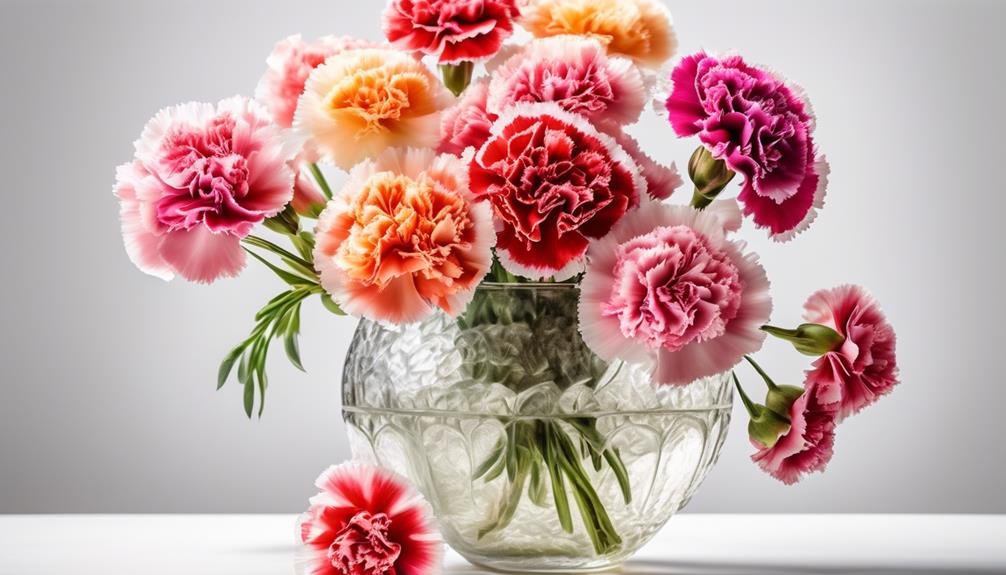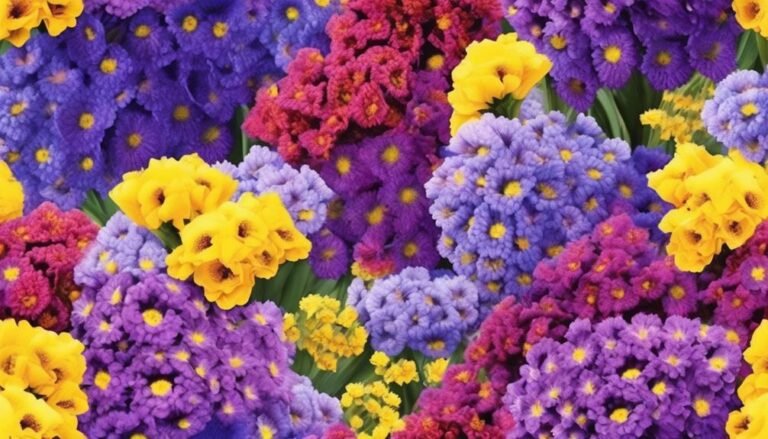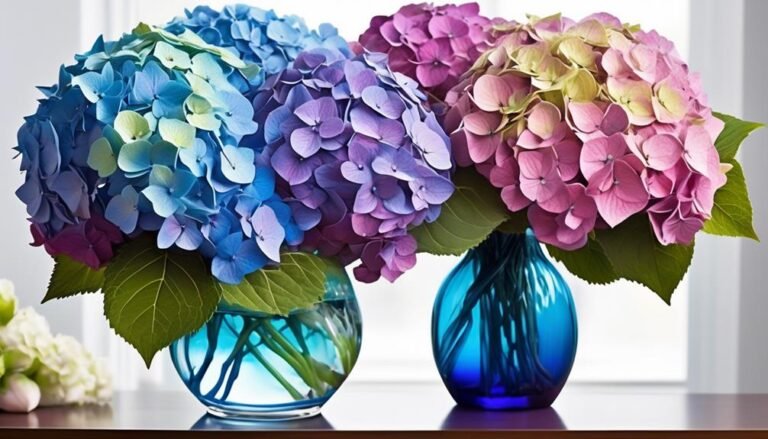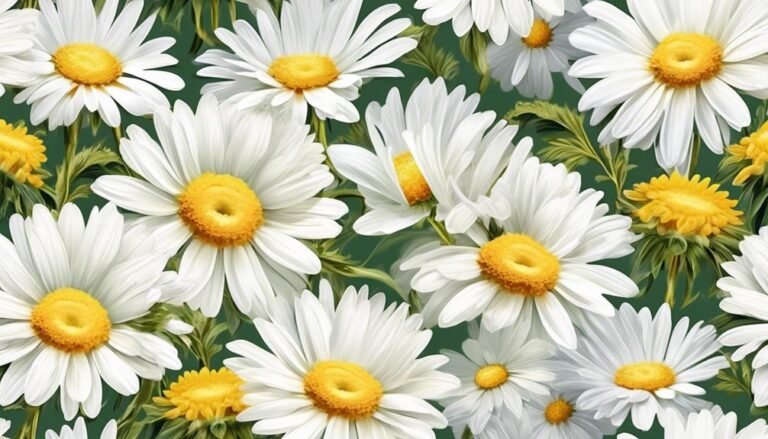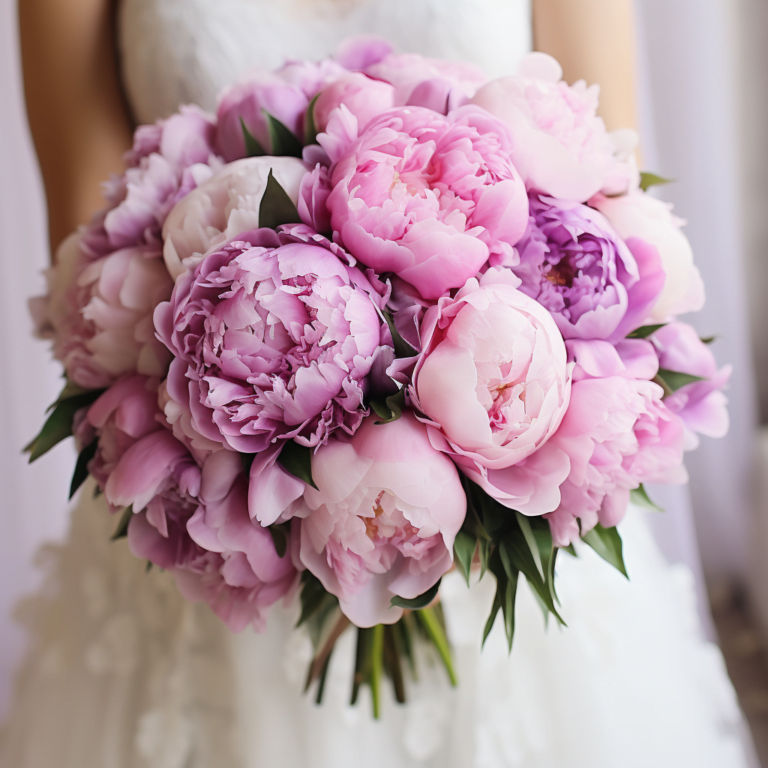Popular Types of Florist Flowers – Carnation
Carnations, also known as Dianthus caryophyllus, are much more than just a typical flower found in bouquets. These flowers have a rich history and offer a fascinating glimpse into the world of botany.
Scientific Name:
Carnations are scientifically known as Dianthus caryophyllus. They belong to the Caryophyllaceae family and are native to the Mediterranean region.
Variety of Colors:
Carnations come in a variety of colors, each with its own unique symbolism. For example, red carnations symbolize love and admiration, while pink carnations are associated with gratitude and affection. White carnations represent purity and luck, and yellow carnations symbolize disappointment or rejection. Understanding the symbolism behind the colors adds depth to the beauty of these flowers.
Intricate Biology:
The biology of carnations is quite intricate. These flowers have a unique ruffled appearance and a spicy, clove-like scent. They are herbaceous perennial plants that typically grow to be about 16 inches in height. Carnations also have a long vase life, making them a popular choice for floral arrangements.
Cultivation:
Carnations are relatively easy to grow and are a popular choice for gardens. They require well-drained soil and plenty of sunlight. With the right care, they can bloom profusely and add a splash of color to any garden.
In conclusion, carnations are not just beautiful flowers, but also a fascinating subject to explore. Their scientific name, symbolism, biology, and cultivation make them a captivating addition to the world of floristry and gardening.
Scientific Name
The scientific name of the carnation is Dianthus caryophyllus, reflecting its botanical characteristics and historical significance. Dianthus, meaning 'divine flower' in Greek, captures the admiration and reverence for this flower. The specific epithet 'caryophyllus' alludes to the spicy aroma of the blooms and the shape of their petals.
Carnations belong to the Caryophyllaceae family, which includes over 3,000 species of flowering plants. The scientific name 'Dianthus caryophyllus' not only identifies this species but also reflects its deep historical and cultural significance. Cultivated for centuries, carnations hold symbolic meanings such as love, fascination, and admiration in many cultures. They've been used in art, literature, and religious ceremonies, contributing to their enduring cultural significance.
The botanical nomenclature of Dianthus caryophyllus symbolizes the rich tapestry of meanings woven into this beautiful flower. Its scientific name encompasses its botanical traits and represents the deep cultural and historical roots it has established across different civilizations.
Background History
Carnations, originating from the Mediterranean region, have a rich history intertwined with cultural and religious significance. Cherished by ancient Romans for their use in wreaths and perfumes, these flowers have been prominent in religious art, symbolizing various aspects of Christian faith.
The red carnation, in particular, is linked to the crucifixion of Jesus and is believed to have bloomed from the Virgin Mary's tears, making it a symbol of deep love and affection.
Carnations have also held cultural significance across different societies throughout history, with their extensive color palette and long-lasting blooms associated with diverse meanings such as love, fascination, and distinction. The Latin name for carnations, 'Dianthus,' translates to 'God' and 'flower,' reflecting the reverence and admiration that these flowers have garnered across various cultures.
Today, carnations continue to be a beloved choice for various occasions, from religious ceremonies to personal expressions of affection.
Physical Description

Carnations come in a variety of colors such as pink, red, orange, yellow, green, purple, and white, with classic large-blossomed varieties boasting double flowers with up to 40 petals. The stems of carnations typically grow to a height of 16-30 inches and are bluish-green in color. These flowers have narrow, pointed leaves without ribs, adding to their delicate and elegant appearance.
Carnations are very sensitive to ethylene, a natural gas produced by certain fruits and vegetables, which can cause them to wilt prematurely. It's important to keep them away from ethylene-producing items to maintain their freshness.
Carnations are available in three main groups: large-flowered, spray, and dwarf carnations, offering versatility for various uses. They're known for their long-lasting nature, making them popular for creating floral arrangements and serving medicinal purposes.
Carnations hold symbolic meanings based on their color, with white carnations often used in wedding bouquets to symbolize pure love and good luck. This symbolism has led to their widespread use in weddings and celebrations, solidifying their place as a beloved and cherished flower.
Colours and Characteristics
Carnations are versatile and enduring flowers available in a wide range of colors, including pink, red, orange, yellow, green, purple, and white. Their ruffled and full petals give them a unique and unforgettable appearance in floral arrangements. Carnations also have a mild spicy or peppery clove-like aroma, making them a popular choice for perfumes and adding a pleasant fragrance to floral displays.
These flowers have a vase life of 7-18 days and can be preserved by pressing them between sheets of paper. Carnations are suitable for various occasions such as weddings, Mother's Day, and other celebrations due to their long-lasting nature. They hold symbolism in different cultures, representing love, devotion, passion, commitment, distinction, and a mother's undying love.
Different colors of carnations hold particular symbolism in various cultures; for example, in Korea, white carnations symbolize pure love and good luck, while in the United States, red carnations represent admiration and affection.
The versatility, enduring nature, and diverse symbolism of carnations make them a popular choice for floral arrangements worldwide.
Varieties Available
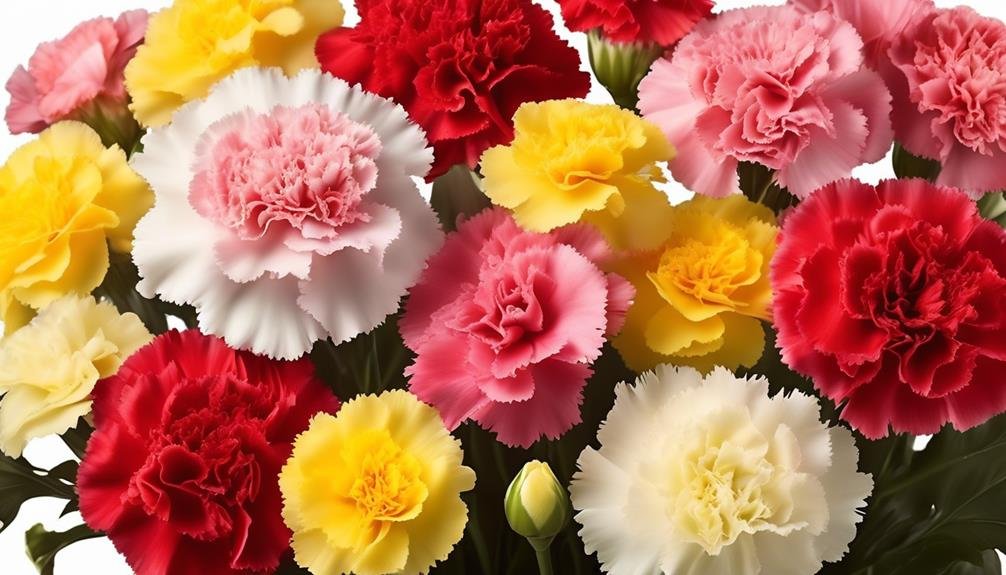
Carnations come in various forms and colors, making them a versatile choice for floral arrangements. Large-flowered or standard carnations are commonly found in flower shops and come in colors such as white, red, pink, and yellow. Spray carnations, also known as miniature carnations, are favored as filler flowers due to their smaller size and abundant blooms. Dwarf carnations, also called midi, are popular as houseplants and for smaller floral displays, adding elegance to any setting.
Carnations are sought after in the floral industry for their versatility. They can be used in standalone bouquets or mixed arrangements, and paired with bold flowers like roses, sunflowers, and lilies to add texture and depth to the overall design.
Each color of carnation holds symbolic meanings. For example, red carnations symbolize love and affection, while white carnations signify pure love and good luck. This adds a meaningful touch to floral arrangements, allowing them to convey heartfelt messages through the language of flowers.
Seasonal Availability
Carnation availability is influenced by various factors such as cultivation practices, environmental conditions, and regional variations in the flower market. While carnations are traditionally associated with spring and summer, they're available year-round due to widespread cultivation. However, the availability of certain colors and varieties may still follow seasonal patterns.
Climate change can impact carnation availability, as changes in temperature and weather patterns can disrupt natural blooming and harvesting cycles. Greenhouse cultivation is employed to extend the seasonal availability of carnations, providing a controlled environment for year-round production. This helps mitigate the effects of seasonal fluctuations and ensures a more consistent supply of carnations throughout the year.
Care Tips
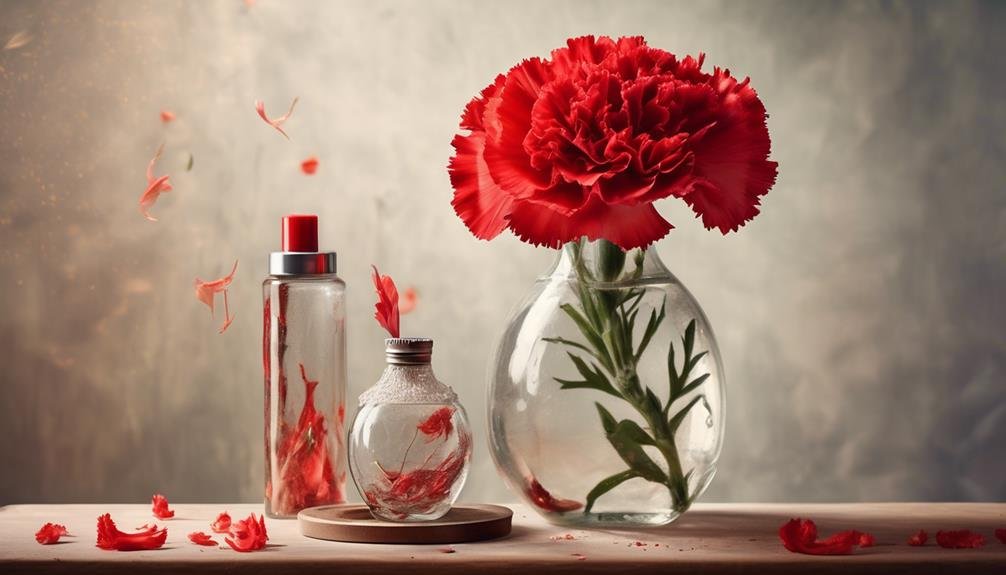
Caring for Carnations: Essential Tips for Long-Lasting Freshness
Caring for your carnations is essential to ensure their longevity and vibrancy. Here are some crucial care tips to keep your carnations fresh and healthy:
- Water Changes and Stem Recutting:
Regular water changes every 2-3 days are crucial to prevent bacterial growth, which can clog the stems and hinder water uptake. When changing the water, make sure to recut the stems at a 45-degree angle to facilitate better water absorption.
- Flower Food for Essential Nutrients:
Using flower food in the clean vase can provide essential nutrients to keep the carnations healthy and vibrant. This helps in maintaining optimal conditions for their growth and longevity.
- Pruning Techniques for Growth Promotion:
Promptly removing faded spray carnation heads not only enhances the aesthetic appeal of the arrangement but also encourages new growth. Recutting the stems and removing foliage below the waterline are essential practices that improve water uptake, preventing the development of bacteria and maintaining the overall health of the carnations.
- Teasing Out Closed Carnations for Better Blooming:
Teasing out closed carnations gently can aid in their blooming process, showcasing their vibrant and colorful petals. This technique helps the carnations to fully bloom, allowing you to enjoy their beauty for an extended period.
Are Carnations and Poppies Suitable for the Same Floral Arrangements?
Yes, carnations and poppies are both suitable for the same floral arrangements. These two types of florist flowers complement each other beautifully, bringing contrast in color, texture, and shape to a bouquet or centerpiece. Their harmonious combination can create stunning and unique compositions for any occasion.
Conclusion
Carnations, also known as Dianthus caryophyllus, are a top choice for florists because of their long-lasting blooms and delightful fragrance.
These versatile flowers come in a wide range of colors and varieties, making them suitable for various occasions and carrying different symbolic meanings.
Understanding their seasonal availability and proper care tips will ensure that carnations remain vibrant and beautiful in floral arrangements.
